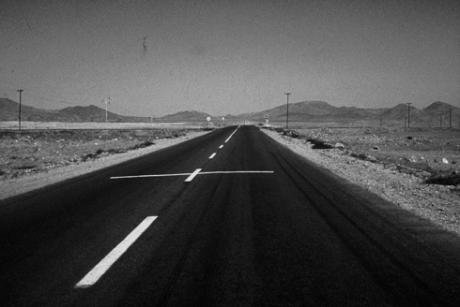Two exhibitions
dal 17/9/2009 al 2/1/2010
Segnalato da
Centro Cultural Montehermoso Kulturunea
Teresa Margolles
Flavio de Carvalho
Wilson Diaz
Sung Hwan Kim
Maria Lassnig
Erlea Maneros Zabala
Ania Molska
Anu Pennanen
Lotty Rosenfeld
Katerina Seda
Apichatpong Weerasethakul
Cosmin Costinas
17/9/2009
Two exhibitions
Centro Cultural Montehermoso Kulturunea, Vitoria-Gasteiz
After the final simplifications of ruins / Teresa Margolles

After the final simplifications of ruins
Forms of historiography in given places
Flávio de Carvalho, Wilson Díaz, Sung Hwan Kim, Maria Lassnig, Erlea Maneros Zabala, Ania Molska, Anu Pennanen, Lotty Rosenfeld, Katerina Šedá, Apichatpong Weerasethakul.
Curated by Cosmin Costinas
"I see Brasilia as I see Rome: Brasilia began with a final simplification of ruins". Those were the words of the writer Clarice Lispector (1920-1977) during her visit in 1962 to the recently-built federal capital of Brazil. Brasilia, like Rome. Modernity nostalgically revealing itself through an archetype of grandeur and failure. It is with this proclaimed analogy that this exhibition begins, but rather than ruminating excessively on the analogy itself, it aims to pay a closer look at the poetic seduction that such an utterance entails.
In the last decade or so, an enormous amount of artistic production, which takes history as its subject-matter has imposed itself as a genre in international art. In close connection, another genre of contemporary art has adopted an endless number of local contexts as its subjects. But what form of history is being understood through these practices and what meaning of localities is being worked with? How do these practices approach their central issues and, perhaps more importantly, how do the exhibitions which put together these positions imagine their narrative function, in the specific language of exhibition-making? In many cases, history became an escapist fetish in which we are invited to indulge in order to avoid formulating the politics of today and consequently of tomorrow, and to remain there, in an exhausted future described as a ruin of our present, as in the sub-genre of modernist memorabilia art. These practices came with an ostensibly anti-disciplinarian accumulation of historical material, of often personal, micro-historic souvenirs, fuelled by an archival reflex from an era when the accumulation of symbolic capital moved at a different pace. Are these attempts at bringing to light subaltern histories or endless formulations of specificity and alterity that compromise any potential for universal or internationalist narratives of solidarity and emancipation? And is the endless reformulation of minimalism in many of these practices a denial of realism and its potentials?
"After the final simplifications of ruins" aims to structure itself in awareness of these circumstances, in the same way in which it remains aware of the histories and localities that make up its immediate institutional and geographical context. It puts together positions from a number of artists working in seemingly irreconcilable conditions throughout the second half of the 20th century and the cloudy beginnings of the 21st. The research on Flavio de Carvalho and the accompanying historical material has been developed by Inti Guerrero. This exhibition developed from and as a consequence of working for "Like an Attali Report, but different. On fiction and political imagination" show that took place at Kadist Art Foundation in 2008. It is thus a natural continuation of that exhibition.
----
Teresa Margolles
Los sonidos de la muerte
For 15 years Margolles has been dealing with what she calls ‘the follow up of the body after life, and the appropriation of human inert elements to understand death in its social dimension’. She has pursued such an aim by investigating the ‘life of the corpse’, that is, the physical and social transformation of what we could call the after-body and its metaphoric power. Her work is always based on a peculiar artistic use of vestiges from dead human bodies or associated with them. As Klaus Görner and Udo Kittelmann have said, ‘death and its accompanying circumstances are not represented, but presented’. Yet death is not her end but the instrument for a moving social contestation: Margolles’ main goal is neither anthropological nor macabre: it is political. Her work is a reaction to the increasing violence all over the world, and its daily presence in the media. On a more specific stance, it delves into the effects of growing criminality in Third World cities, and particularly in Mexico, often associated with drug and human traffics.
Exhibition produced by MARCO-Vigo
Image: Lotty Rosenfeld Acción de arte: Carretera Panamericana, Desierto de Atacama. Copiapó. Chile, 1981 - 66,66 x 44,63 cm. Photo: Juan Castillo // Courtesy of the artist.
Centro Cultural Montehermoso Kulturunea
C/ Fray Zacarías 2 - 01001 Vitoria-Gasteiz
Opening hours
From Tuesday to Friday, from 11 to 14 and from 18 to 21.
Saturdays, from 11 to 14 and from 17 to 21.
Sundays and bank holidays, from 11 to 14
Closed on Monday



